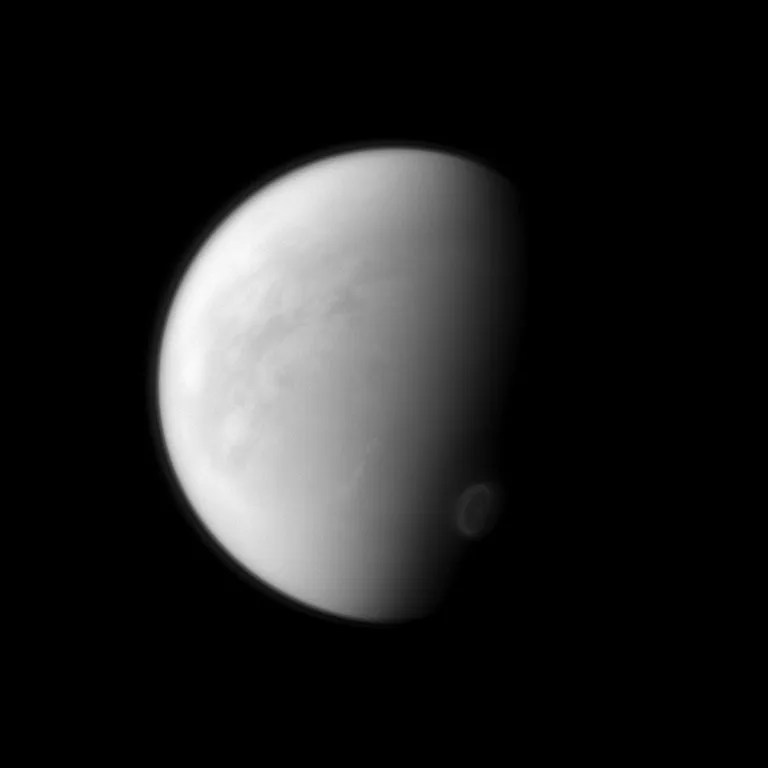1 min read

During this Titan flyby three of the instruments on Cassini focused on the large moon’s atmosphere.
The visible and infrared mapping spectrometer (VIMS) was in the driver’s seat at closest approach and acquired approximately one kilometer per pixel high-resolution images of Adiri, west of the Huygens landing site. On the inbound leg, the composite infrared spectrometer (CIRS) carried out near-infrared vertical mapping of the atmosphere near the Huygens probe entry latitude, at 11 degrees south latitude, to characterize vertical aerosol and gas profiles. Outbound, VIMS attempted detection of clouds in order to monitor climatic changes as the spring season progresses into the northern hemisphere.
The imaging science subsystem (ISS) instrument rode along with CIRS and VIMS observations, inbound and outbound, to image Titan's surface and atmosphere. The outbound leg included the region where extensive surface changes were observed in Fall 2010 and an area at mid-southern latitudes on the trailing hemisphere that had been only been imaged at lower resolution.
ISS also monitored Titan to track clouds and their evolution for an extra day after the Titan encounter.
Date
Nov. 29, 2012
Altitude
630 miles (1,014 km)
Speed
13,000 mph (5.9 km/sec)







